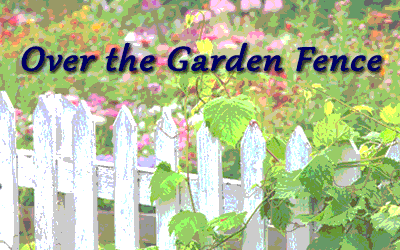 March 22, 2018 - Efficient transplanting is a gradual process. Changing a plant’s environment and routine shocks them. Hardening off new container seedlings may take two weeks. So, place container seedlings outside for a couple hours their first day, increasing their stay by two hours each consecutive day. If you are gone during the day, place the seedlings in a shaded area protected from wind, and then bring them in at night. Do not leave seedlings outside in freezing temperatures.
March 22, 2018 - Efficient transplanting is a gradual process. Changing a plant’s environment and routine shocks them. Hardening off new container seedlings may take two weeks. So, place container seedlings outside for a couple hours their first day, increasing their stay by two hours each consecutive day. If you are gone during the day, place the seedlings in a shaded area protected from wind, and then bring them in at night. Do not leave seedlings outside in freezing temperatures.
Transitioning seedlings naturally toughens them up when eased into their new environment. One unique method of toughening up tomato and pepper seedlings and creating shorter and stronger stems, is to lightly brush seedlings with a wooden dowel, (about a dozen times a day) for several days prior to transplanting.
Seedlings with several adult, or true, leaves, the ones emerging after the first two cotyledon leaves, are signs the stem and roots are old enough to transplant. Small container seedlings transplant more effectively than large over grown seedlings. Large seedlings may develop bound roots, or jump into their reproductive stage after transplanting, dwarfing their development.
After hardening off seedlings dig garden holes deep enough for fully extended roots and wide enough to incorporate the container’s medium with the garden’s soil. Place compost at the bottom of the hole. Water the area prior to planting, or at the time of planting. Water your seedlings before removing them from their containers. Loosen the container soil with a minimum disturbance to the seedling roots.
Lightly handle seedlings by their leaves. Their roots have fine hairs for absorbing water and minerals. Their stems have outer nodes for leaf production and inner tubules. The inner stem’s phloem moves food, via photosynthesis within the leaves, to the roots. The inner stem’s xylem brings water, nutrients and minerals from the roots for stem and leaf growth. Handle lightly to reduce damaging a seedling’s fine root hairs and delicate stem systems.
Small container seedlings do not need their roots or leaves cut prior to planting. Surround the transplanted roots with a mix of the native earth and your seedling’s planting mix, gently tap soil around the stem’s base. For earlier fruit, tomatoes and peppers stems can be placed in the soil, just under their first adult leaves. On sunny days provide new transplants with a few days of shade. Keep transplant root zones moist. If a transplant needs a nutritional boost, only use a diluted liquid fertilizer or compost tea for the first few weeks of the transplant; you can easily burn the young roots with fertilizer.
Easing your container seedlings into your garden can give them more resistance to disease and insects than plants started outside from seed. Transplanting gives growers higher yields on seeds, extends growing seasons, provides early harvests, eliminates thinning, diminishes competing weeds, and enables secession planting. The extra time involved in starting container seedlings and transplanting, in the beginning of a garden, will result in greater harvests in the end.
Article by Brian David (Mariposa Master Gardener)
Visit Mariposa Master Gardeners on Facebook.
Using Transplants in Vegetable Production, Wayne L. Schrader, UCANR pub 8013. http://anrcatalog.ucdavis.edu
For further gardening information and event announcements, please refer to the Mariposa Master Gardener website (http://cemariposa.ucanr.edu) and Facebook page (Mariposa Master Gardeners). The UC Master Gardener Helpline is available to assist residents with questions about home gardening.
The Helpline is open two days per week, and walk-in clients are welcome.
Tuesdays, 9:00 A.M. - 12:00 P.M.
Thursdays, 2:00 P.M. - 5:00 P.M.
Call, (209) 966-7078, to speak with a volunteer, or leave a message or email mgmariposa@ucdavis.edu.









